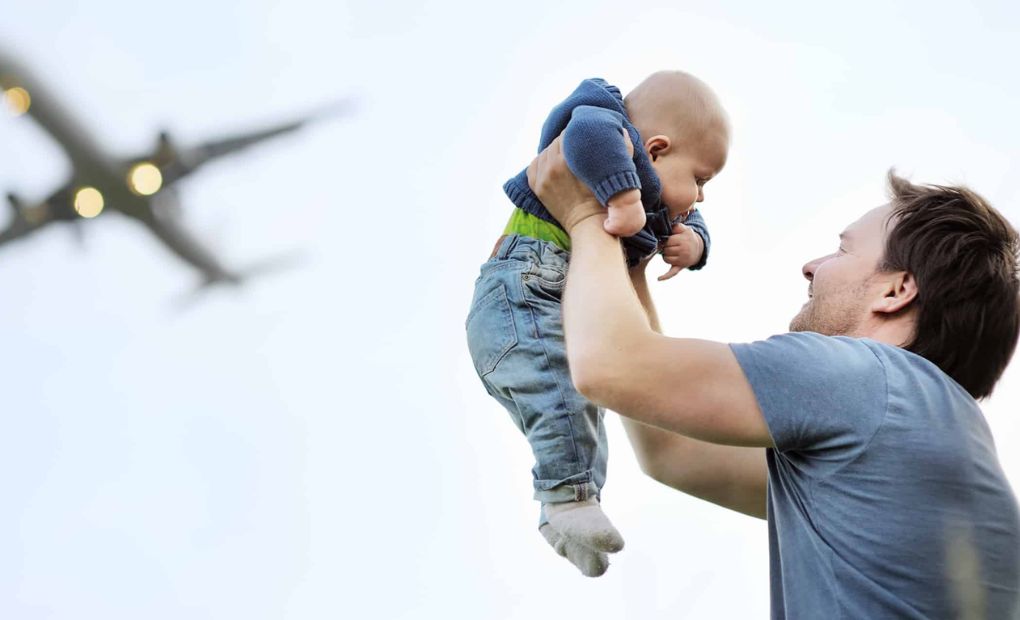Traveling by air with an infant is no joke, but it is entirely possible. Learn my suggestions for traveling with a baby to make the journey enjoyable for everyone.
With long security lines, cramped airplane seating, and crowded waiting areas, flying is not the most pleasant experience; adding a toddler to the equation multiplies the aggravation exponentially. Some small children lack the patience to endure airport security. They may dislike sitting peacefully for extended periods of time, and they may be uneasy during turbulence or irritated by ear-popping changes in air pressure.
Fortunately, with adequate preparation and planning, you can have a travel day without stress. Check out these stress-reducing strategies for flying (and traveling) with toddlers, some of which come directly from flight attendants, whether you’re jetting off to a relative’s house or Disney World.
Related Post: Discover the Ultimate Guide to Finding the Best Food While Traveling: Tips and Tricks You Need to Know!
Book an Early Morning Departure
You should schedule an early morning departure if traveling with infants or young children. Patrick, a flight attendant, explains these give you the most excellent chance of avoiding delays during takeoff and landing. “They are usually less crowded, too,” he says. In addition, everyone is exhausted and desires a nap, notably children.
Save Your Upgrades for Toddler-Free Travel

First-class travel with children can be more distressing than it is worth. Mom Joanna describes traveling with her boisterous, active toddler and incurring the vocal ire of her first-class seatmates throughout the duration of the flight. A flight attendant states, “It’s not fair, but if you have children in the economy, you’ll get more sympathy and assistance.”
Dress in Layers and Skip Shoes With Laces
When traveling with a toddler, you can and should be prepared for drastic changes in temperature, whether you are changing climates or merely experiencing in-flight heat and/or air conditioning. Wendy, a flight attendant, and mother, recommends that you dress your children in comfortable layers, preferably without buttons, zippers, or anything else that might impede their access to the restroom.
Bring Surprises
A wrapped new toy has two advantages when flying with a toddler: children enjoy unwrapping gifts, and a new toy is more engaging.
Consider Using a More Compact Stroller

Some parents find it impossible to navigate an airport without a stroller; therefore, you should consider converting to a compact umbrella stroller or travel stroller. Also, check your stroller at the gate prior to departure; it will be waiting for you when you exit the aircraft.
Wendy suggests considering a kid harness (also known as a tether) if you’re traveling with multiple children. “I was adamantly opposed to them until I observed a woman with three small boys utilizing them at baggage claim. It made perfect logic,” she says, “with the exit doors to the exterior located right there. Flying is already stressful enough. Do whatever is necessary to safeguard your children and your sanity.”
You may enjoy: Are You Planning Your First Solo Trip? 30 Things to Know
Don’t Pack More
Flight attendants advise parents to bring sufficient necessities for the flight. Lynn states, “Unfortunately, you can expect there to be no kid-friendly food on an airplane.” In addition, the comfort products we can provide are extremely limited.
In contrast, parents will encounter difficulty if they overpack. “Typically, when a single parent is traveling with one or more children, they bring an excessive amount of items in an effort to keep their children happy,” Wendy says. They neglect that they must carry all that baggage and their children off the plane.
Plan Your Packing List
Consider composing a comprehensive packing list to prevent overpacking and guarantee you don’t neglect anything essential. Mark or underline the items that will need to be packed at the last minute, such as the stuffed animal your child sleeps with or the tablet that is currently charging, so that you can consult a list before leaving the house.
Prepare for Air Pressure Changes

Before flying with a child who has recently had an ear infection or a cold, obtain the doctor’s sanction. The change in cabin air pressure may result in discomfort for your child. After passing through security, stock up on enough water for everyone to endure a potential delay and still have enough for the descent, which is typically the most distressing time for ear pressure discomfort. Have your children imbibe some immediately following takeoff and during the final 30 to 45 minutes of descent. In addition to assisting with pressure adjustments, swallowing provides a hydrating benefit.
Seat Kids Away From the Aisle
Aisle seats can be hazardous for young children and offer them potentially too much freedom of movement. For instance, small hands and feet may be accidentally brushed by passing individuals, and steaming coffee and water may be within reach as the food and beverage cart passes. If possible, choose the window seat, which provides a view and places you between your child and other passengers in your row.
Beware of Germs

By ensuring that your child’s hands are sanitary, you can prevent any travel-related illness. When flying with a young child, wash down everything from hands to tray tables with sanitizing wipes before settling into your seats, and above all, do not send your children to the restroom barefoot. “The floor is a Petri dish,” reveals a flight attendant. “When in the air, objects jostle. There is more than water on the lavatory floor.
Select an Airline With Child-Friendly Amenities
A family-friendly airline desires nothing more than content, occupied children. As a result, many leading airlines offer a variety of kid-friendly amenities to their youngest passengers, such as a wide selection of their beloved TV shows and movies, kid-approved headphones, and snacks.
Verify with the gate agent before boarding whether the airline offers priority boarding for families with young children. Frequently, airlines designate a special boarding time for families so that they can board a little earlier and give you time to settle in. Family lounges or airports with areas for children to burn off energy during layovers or before boarding are additional benefits to seek out.
Conclusion
Air travel with an infant requires planning and preparation but can be accomplished successfully. Here are some tips to make the trip more enjoyable: Book early morning departures, save upgrades for journeys without toddlers, wear comfortable layers, bring surprises such as new toys, consider a compact stroller, pack only essentials, prepare for air pressure changes, seat children away from the aisle, and select an airline with child-friendly amenities.
Go trip guide always shares useful traveling tips, We hope you enjoy our posts.

